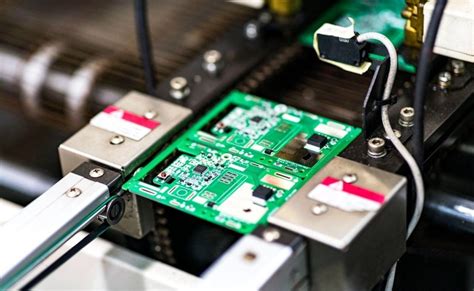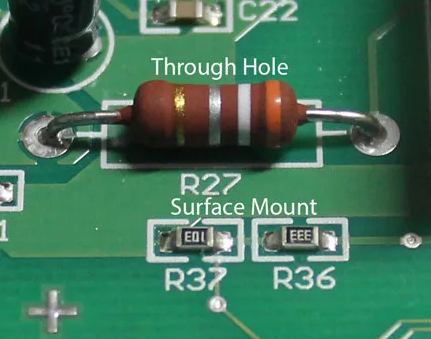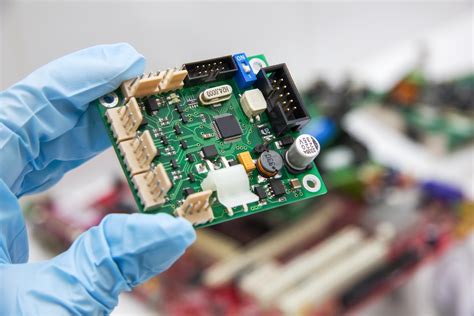Understanding PCB Assembly Quotes for Your Projects

Key Takeaways
When embarking on a project that requires PCB assembly, understanding the intricacies of pcb assembly quotes is crucial. These quotes provide a comprehensive overview of the anticipated costs and timeframes associated with your project. It’s essential to examine the key components within each quote, which typically include materials, labor, and additional services such as testing or packaging. Evaluating cost factors such as component sourcing and assembly complexity can significantly impact the final price.
“Always seek clarity on what is included in the quote to avoid unexpected expenses later.”
Comparing multiple PCBA quotes can reveal disparities that are rooted in vendor capabilities and quality assurances. Pay close attention to lead times; a quote may seem economical, but if it extends your production schedule significantly, it may not be the best value. Moreover, assessing whether the manufacturer adheres to industry quality standards ensures that your finished product meets your expectations.
In negotiating for better deals, don’t hesitate to ask for itemized quotes which lend transparency and may provide leverage when discussing prices with suppliers. By synthesizing this information from your evaluation of pcb assembly quotes, you will be better positioned to make informed decisions that align with your project goals and budgets.
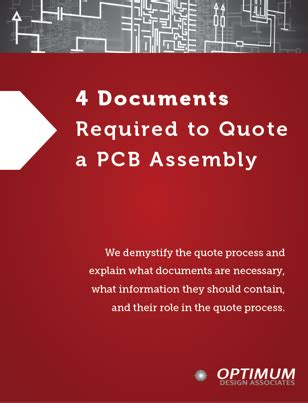
Introduction to PCB Assembly Quotes
When embarking on a project that involves PCB assembly, understanding the intricacies of pcb assembly quotes is crucial for making informed decisions. PCB assemblies (PCBA) represent a significant investment in electronic manufacturing, and the quotes you receive play a central role in budgeting and planning. These quotes can vary widely based on several factors, including the complexity of the design, materials used, and production volumes.
In this landscape, it is important to recognize that not all quotes are created equal; some may highlight clear specifications while others might lack detail. Key elements of a good pcb assembly quote often include cost per unit, estimated lead times, and breakdowns of various fees such as tooling or setup costs. By familiarizing yourself with these components, you will not only understand what to look for but also how to effectively communicate your needs to suppliers.
Furthermore, when interpreting these quotes, consider requesting detailed documentation that outlines each segment of the cost structure. Here’s a simplified overview in table format to help illustrate what you might expect in a PCB assembly quote:
| Component | Description |
|---|---|
| Unit Cost | Cost per individual PCB assembled |
| Setup Fees | Initial charges for production setup |
| Material Costs | Costs associated with components used |
| Lead Time | Estimated timeframe for production |
By being equipped with this knowledge and understanding the elements that influence pcba quotes, you will be better positioned to evaluate offers critically and ultimately select a provider who meets your project’s specifications as well as budgetary constraints.

Key Components of PCB Assembly Quotes
When obtaining a pcb assembly quote, there are several key components to consider that can significantly affect both the overall cost and quality of your project. First and foremost is the Bill of Materials (BOM), which lists all components required for the assembly. A detailed BOM helps suppliers provide accurate pcb assembly quotes and reduces the risk of unexpected costs arising from missing parts. Next, consider the assembly specifications that outline how the components should be mounted on the printed circuit board (PCB). This includes details like surface-mount or through-hole technology, soldering methods, and any specific testing requirements. Each of these factors can influence not only cost but also lead times.
Additionally, look at production volume; many manufacturers will offer tiered pricing based on quantities ordered. Larger orders often benefit from reduced per-unit costs, making it essential to evaluate your project’s needs carefully. Shipping and logistics are also crucial elements that can impact your final quote—options may vary in terms of delivery speed and associated costs, so it’s wise to inquire about these when comparing quotes.
Finally, don’t overlook any potential hidden fees related to setup or tooling that may arise during production. By understanding these key components in detail, you can better assess different pcba quotes and ensure you select a provider that meets both your budgetary and technical requirements effectively.
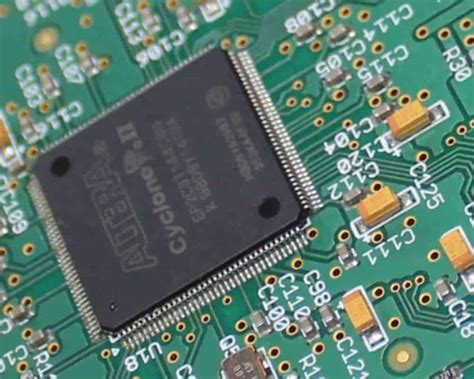
Evaluating Cost Factors in PCB Assembly
When it comes to PCB assembly, several cost factors play a crucial role in determining the overall price of your project. Firstly, the complexity of the design directly impacts costs; intricate designs often require more specialized manufacturing processes and components, increasing both labor and materials expenses. Additionally, the choice between PCB assembly methods can affect pricing significantly. For example, surface mount technology (SMT) may provide cost savings for high-volume production compared to traditional through-hole methods. Another essential aspect to consider is the sourcing of components. Prices can fluctuate based on market demand and availability, thus opting for a supplier with competitive rates may yield substantial savings. Moreover, the volume of PCBA units ordered can lead to bulk discounts—ordering larger quantities typically reduces the cost per unit, which is an important consideration if you’re planning a large-scale production run. Finally, don’t overlook hidden costs such as shipping fees or potential tariffs on imported components; these can add to your total expenditure unexpectedly. By diligently evaluating these factors when reviewing PCB assembly quotes, you can ensure that you are making an informed and financially sound decision for your project.

Comparing Multiple PCB Assembly Quotes
When it comes to pcb assembly, comparing multiple quotes is essential for making an informed decision that aligns with your project’s specific requirements. Start by gathering quotes from several pcba providers, ensuring that they follow a consistent format for easy evaluation. Analyze each quote carefully, focusing on the key components, such as materials cost, labor charges, and additional services offered. It’s also important to look at the lead times associated with each quote, as a longer wait could impact your product’s time to market. Pay close attention to any potential hidden costs that may not be immediately obvious; sometimes lower initial prices can lead to higher overall expenses due to overlooked factors like shipping or assembly options. Additionally, consider the reputation and quality standards of each provider—after all, a competitive price is only valuable if the pcb assembly meets your quality expectations. By systematically comparing these elements across different quotes, you can identify not only the most cost-effective option but also the best fit for your project’s unique needs. This thorough evaluation strategy ensures you get the best value from your pcba providers while safeguarding the integrity of your project.

Understanding Lead Times and Production Schedules
When planning for pcb assembly projects, understanding lead times and production schedules is crucial for ensuring timely delivery and project success. Lead times refer to the period required to manufacture the printed circuit boards (PCBs) and assemble them into the final product. These times can vary significantly based on several factors, including the complexity of the design, the availability of components, and the efficiency of the assembly process. It is vital to communicate clearly with your pcba provider to ascertain realistic timelines that align with your project needs. In addition to lead times, production schedules play an essential role; they outline when each stage of production will occur, helping you manage expectations and plan accordingly. By having a solid understanding of both lead times and schedules, you can make informed decisions that ensure your pcb assembly is executed smoothly without unnecessary delays. Effective management in this area not only enhances efficiency but also improves your overall experience with suppliers, ultimately leading to better project outcomes.
Ensuring Quality Standards in PCB Assembly
When embarking on a pcb assembly project, maintaining stringent quality standards is paramount. The journey of producing a high-quality printed circuit board assembly (PCBA) begins with a thorough understanding of the manufacturing processes and materials involved. One key aspect to consider is the adherence to industry standards, such as IPC-A-610 for acceptability of electronic assemblies. This ensures that the pcba meets both aesthetic and functional requirements, minimizing potential defects that could impact performance. It’s also crucial to evaluate the suppliers’ capability in conducting proper inspections and testing throughout the assembly process, including Automated Optical Inspection (AOI) and Functional Testing, which are essential for identifying any issues early on. Additionally, establishing clear communication with your manufacturer about quality expectations can foster a productive partnership that emphasizes accountability. By prioritizing these elements, you can significantly enhance the reliability of your pcb assembly projects and ultimately achieve better outcomes tailored to your specific needs. Remember, consistent follow-up throughout the production cycle will help ensure that quality remains at the forefront of your PCB development journey.
Tips for Negotiating Better Quotes
When it comes to securing the best pcb assembly services, understanding how to negotiate better quotes is crucial. Start by gathering multiple pcb assembly quotes from different providers, giving you a broader perspective on the price ranges and service offerings available in the market. When reviewing these quotes, pay close attention to the key components included in each proposal. Discussing each aspect with your potential suppliers can often lead to valuable insights and adjustments. Additionally, don’t hesitate to express your budget constraints; many manufacturers are willing to negotiate terms, especially if they value gaining a new client.
As you engage in these negotiations, focusing on volume discounts can also be advantageous. If your project scope allows for a larger order, ask about bulk pricing or rebates for future purchases. Another important factor is lead times; ensuring that the projected timeline meets your needs might encourage suppliers to accommodate you better if they see a long-term relationship potential.
Lastly, communicate any specific requirements you have for quality standards or materials; this will aid in fostering clarity and prevent unexpected costs down the line. By being proactive and transparent during negotiations, you position yourself not only to achieve more competitive pricing but also to form strong partnerships with your pcba providers that can benefit future projects as well.
Conclusion: Making Informed Decisions for Your Projects
In navigating the complexities of PCB assembly, understanding the nuances of pcb assembly quotes can significantly influence your project’s success. It’s essential to recognize that a well-informed decision stems from careful evaluation of each quote received. When assessing pcba options, consider not only the costs involved but also the quality and turnaround times that various manufacturers offer. Maintaining a clear understanding of the distinct elements within each quote will enable you to compare them effectively, ensuring that you achieve the best value while meeting your project specifications. By paying close attention to details such as material costs, labor rates, and any additional fees, you can avoid unforeseen expenditures that may arise later. Moreover, engaging in negotiations regarding these quotes can further enhance the likelihood of securing favorable terms. Ultimately, making informed decisions in your pcb assembly process will empower you to optimize resources while aligning with your project goals and timelines.
Conclusion: Making Informed Decisions for Your Projects
In summary, understanding the intricacies of pcb assembly quotes is crucial for any project that involves pcba. By recognizing the key components that influence these quotes, including materials, labor, and production processes, you empower yourself to make informed decisions. When comparing multiple pcb assembly quotes, it’s essential to look beyond just the bottom-line cost; consider factors such as lead times, quality expectations, and customer service reputation. Each of these elements can significantly impact your project’s outcome and overall satisfaction. Additionally, maintaining open communication with potential suppliers about your specific needs can lead to better negotiation opportunities and ultimately more favorable terms. By taking a thoughtful approach to evaluating pcba options, you can ensure the best value for your investments and achieve successful project results.
FAQs
What is a PCB assembly quote?
A PCB assembly quote provides an estimate of the costs involved in manufacturing a printed circuit board and assembling its components. It typically outlines material costs, labor charges, and any additional fees associated with the production process.
How do I read a PCB assembly quote?
When reviewing a PCBA quote, pay close attention to each line item. Look for details on components, labor rates, and any potential fees. Understanding these components will help you evaluate the overall cost and value of the quote.
What factors influence the cost of PCB assembly?
Several factors can affect the cost of PCB assembly, including complexity of the design, component sourcing, batch size, and required lead times. Higher complexity or smaller batch sizes usually result in increased costs.
How can I compare different PCB assembly quotes?
To effectively compare quotes for PCB assembly, create a checklist of key elements such as pricing breakdowns, lead times, minimum order quantities, and quality assurances. This will allow for an apples-to-apples comparison of different suppliers.
Why are lead times important in PCB assembly quotes?
Lead times provide insight into how long it will take to produce your boards after order placement. Understanding these timelines is crucial for project planning and ensuring that assembled boards arrive when needed.
How do I ensure quality in PCB assemblies?
Always seek out companies that adhere to recognized quality standards, such as ISO certifications. Quality assurance tests should be detailed in your pcb assembly quote, providing confidence that your products meet expected performance levels.
For more information on PCB assembly solutions tailored to your needs, please click here: PCB Assembly Services


